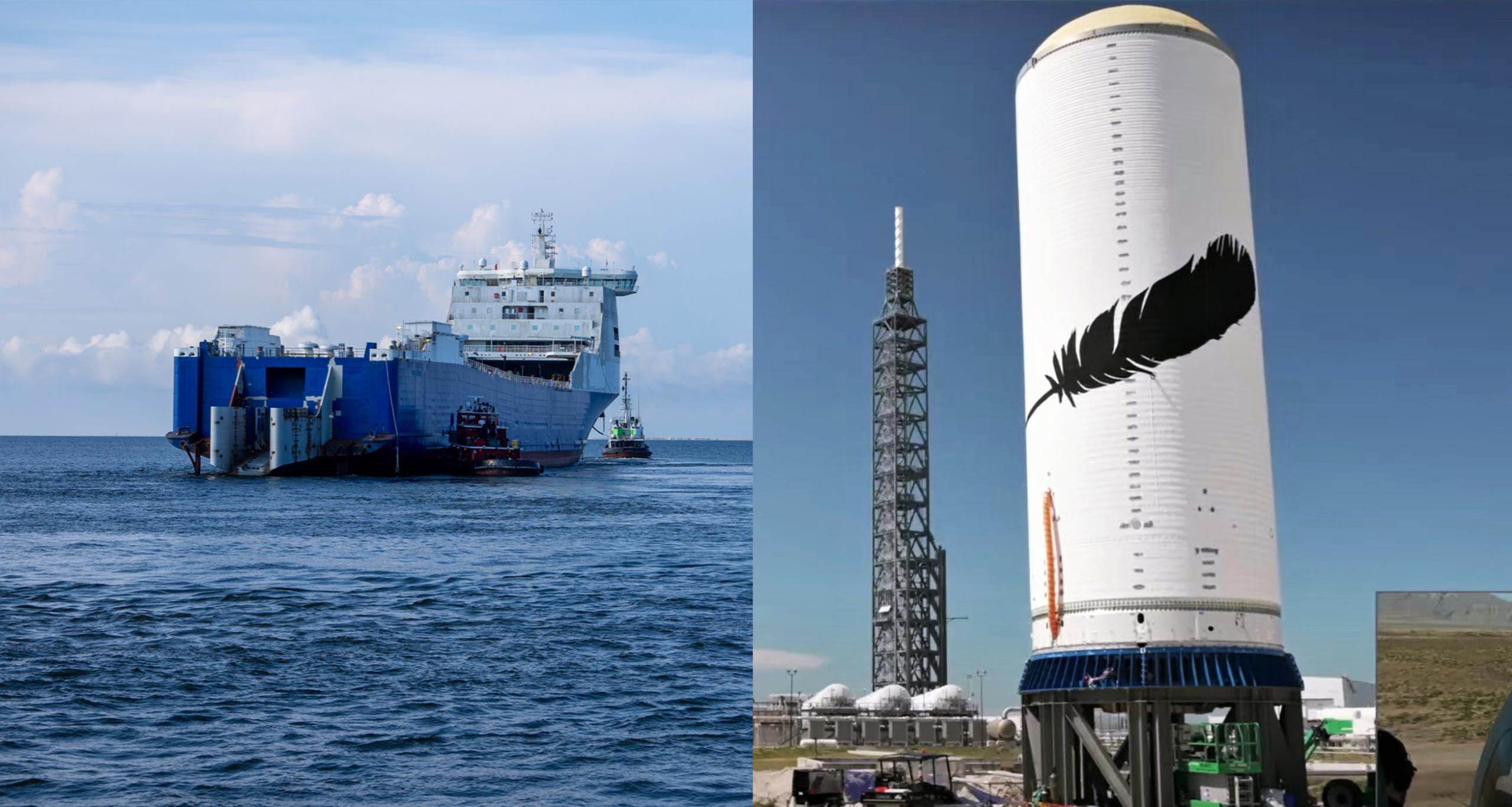
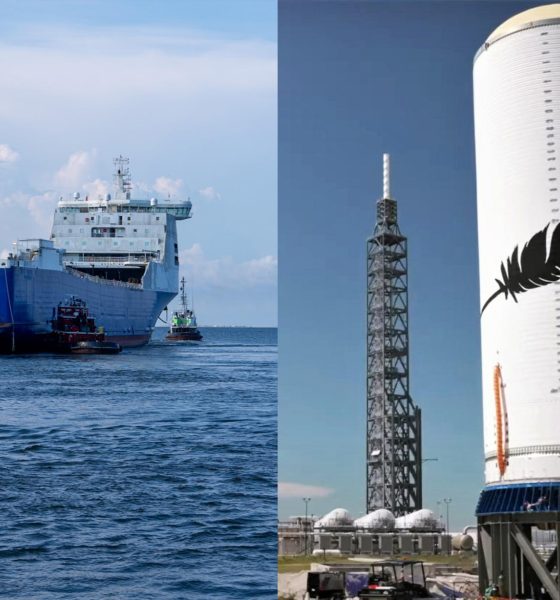
News
Blue Origin scraps New Glenn recovery ship, finishes first ‘test tank’
After four years of halting work, Blue Origin has fully abandoned a transport ship it once intended to convert into a landing platform for its orbital-class New Glenn rocket.
Known as Stena Freighter at the time of sale, Blue Origin purchased the ship for an undisclosed sum – likely several million dollars – sometime in mid-2018. Aside from a flashy, December 2020 re-christening ceremony in which Blue Origin owner Jeff Bezos named the vessel Jacklyn after his late mother, the private aerospace company left the ship largely untouched in a Florida port. Small teams of workers would occasionally work on retrofitting the roll-on/roll-off cargo ship for a future life as a rocket recovery asset but made very little visible progress despite working on Jacklyn for several years.
Now, a few months after a Blue Origin spokesperson first acknowledged that the company was evaluating “different options” for New Glenn booster recovery, Jacklyn has left Florida’s Port of Pensacola for the Texan Port of Brownsville, where documents show that the ship will be scrapped.
According to an unconfirmed report, Blue Origin may ultimately use the same contractors as SpaceX to turn existing barges into ocean-going rocket-landing platforms. Blue Origin had hoped that a large, keeled ship would allow it to launch New Glenn and still recover its expensive booster even if seas were stormy downrange. However, after 107 successful SpaceX Falcon booster landings on flat-bottomed barges that are exceptionally sensitive to wave conditions, just a tiny fraction of launches have been delayed by the ocean. Further, SpaceX has only lost one booster to waves, and it solved that problem by developing a relatively cheap robot. With the benefit of hindsight, it’s not hard to see why Blue Origin changed its mind.
Much like SpaceX’s next-generation Starship rocket, Blue Origin began work on its semi-reusable New Glenn rocket in the early 2010s. Jeff Bezos publicly revealed New Glenn just a few weeks before CEO Elon Musk’s long-planned September 2016 reveal of SpaceX’s next rocket, then known as the Interplanetary Transport System (ITS). Both were massive, meant to be powered by huge new methane/oxygen-fueled engines, and designed from the ground up with some degree of reusability in mind.
But with fairly different designs and wildly different development philosophies, the paths of Blue Origin and SpaceX have only gotten further apart over the last six years. SpaceX thoroughly redesigned its next-generation rocket multiple times before throwing out a large portion of that prior work and settling on an unexpected stainless steel variant that CEO Elon Musk christened Starship in late 2018. Further differentiating the companies, SpaceX began work on steel prototypes almost immediately and successfully built and flew a scrappy pathfinder – powered by an early version of the same Raptor engine meant for Starship – less than a year later.
SpaceX then improvised a factory out of a series of tents and began churning out and testing dozens of more refined prototypes, seven of which would go on to perform flight tests between August 2020 and May 2021. SpaceX’s last test flight ended with a full-size steel Starship prototype successfully landing after launching to an altitude of 10 kilometers (~6.2 mi). Testing slowed considerably after that success but SpaceX appears to have begun ramping up again as it begins to test a Starship (S24) and Super Heavy booster prototype (B7) that have a shot at supporting the rocket’s first orbital launch attempt.
That orbital launch debut has been more or less continuously delayed for years and is about 20 months behind a tentative schedule Musk first sketched out (albeit for a drastically different rocket design) in 2016. Technically, the same is true for Blue Origin, which also said that it intended to debut New Glenn as early as 2020. However, while SpaceX can point to the instability of Starship’s design before 2019 as a fairly reasonable excuse for delays, the general characteristics of New Glenn’s design appear to be virtually unchanged despite its many delays. The smaller rocket – 7m (23 ft) wide and 98m (322 ft) tall to Starship’s 9m (30 ft) width and ~119m (~390 ft) height – will still use traditional aluminum alloys for most of its structures, will be powered by seven BE-4 engines, will land on several deployable legs, will have an expendable upper stage powered by two BE-3U engines, and will be topped with a large composite payload fairing.
Blue Origin canceled plans for a smaller interim fairing, abandoned plans to land the booster on a moving ship, and tweaked the booster’s landing legs and a few other attributes, but New Glenn is otherwise (visibly) unchanged from its 2016 reveal. Ultimately, that makes it even stranger that Blue Origin has done practically zero integrated testing of any major New Glenn components. Only in 2022 did the company finally complete and test a New Glenn payload fairing. Blue may have also built and tested a partial booster interstage, which the New Glenn upper stage will attach and deploy from.
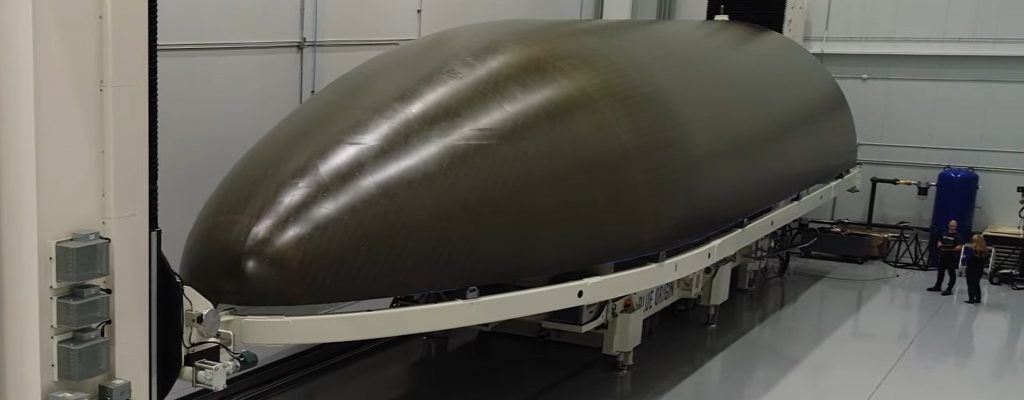
But the true star of the show, at long last, is an apparent full-scale prototype of New Glenn’s upper stage. At minimum, Blue Origin’s first ‘test tank’ (using SpaceX parlance) should allow the company to finally verify the performance of New Glenn’s aluminum tank barrel sections and domes under cryogenic (ultra-cold) conditions. It’s unclear how (or if) Blue Origin intends to complete integrated static-fire testing of New Glenn’s upper stage before the rocket’s first launch, but it’s possible that the tank it finally delivered was designed to support testing with and without engines.
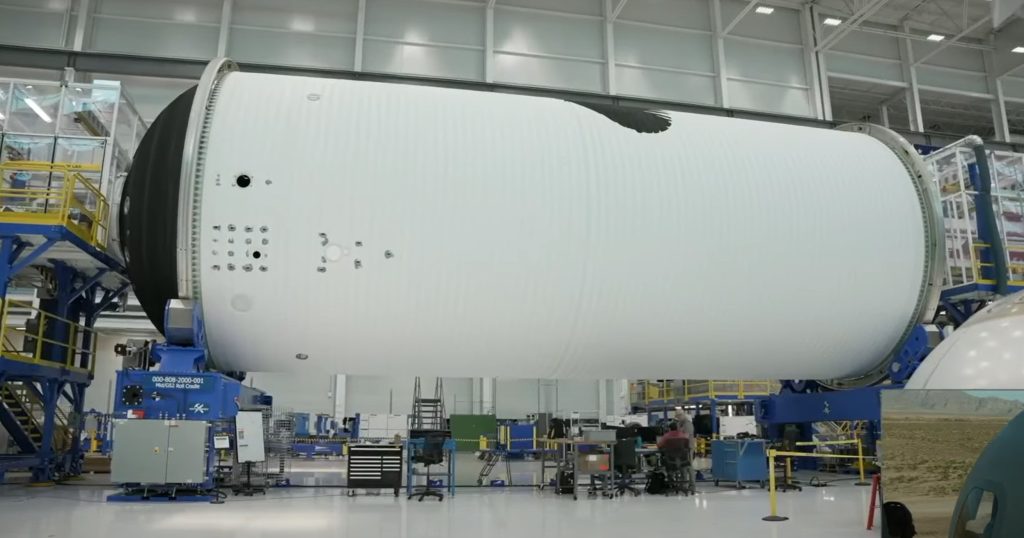
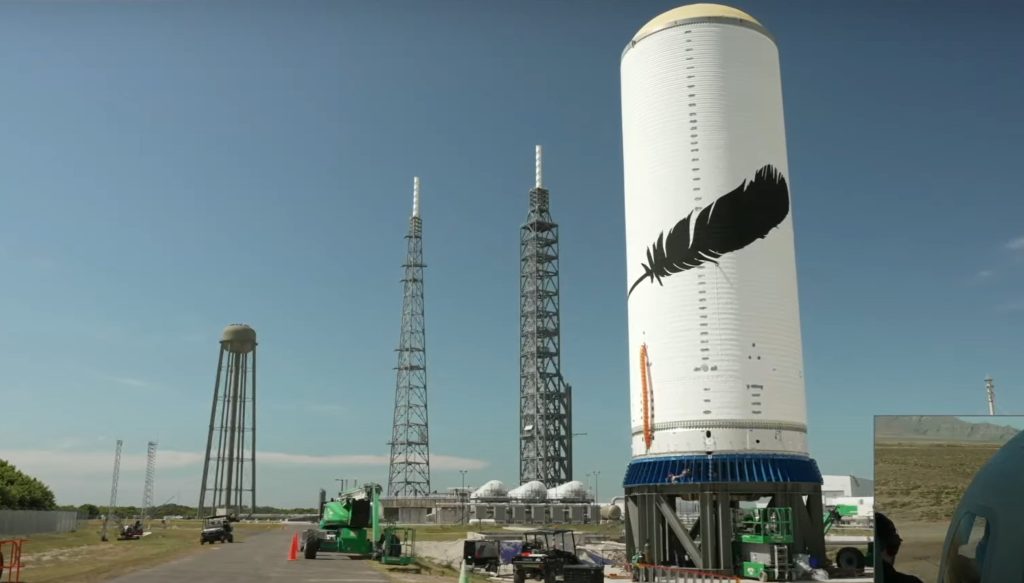
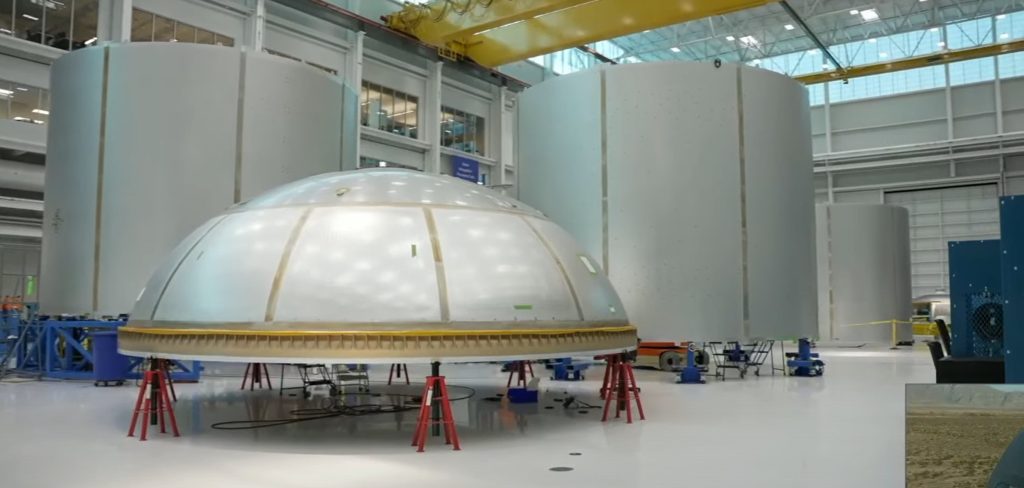
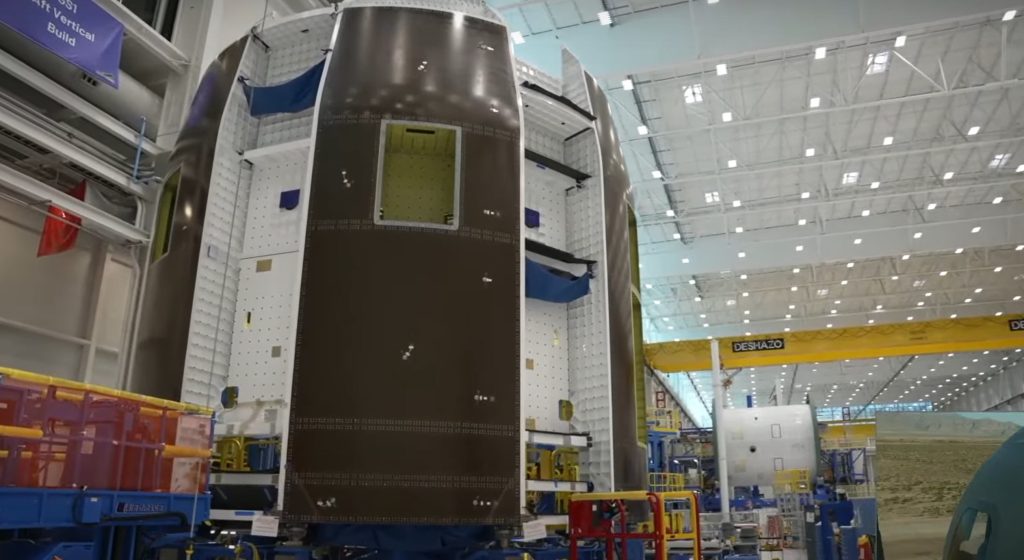
Nonetheless, Blue Origin hasn’t specified what it actually plans to do with its first New Glenn test tank and it’s even less clear why it has taken the company so long to complete one. While difficult, the methods Blue Origin is using to build New Glenn’s primary structures are about as standard as they get for modern rockets. Blue Origin itself even uses the same tech to build its smaller New Shepard rockets. So does SpaceX, ULA, Boeing, Arianespace, and virtually every other manufacturer of medium-to-large rockets, including NASA’s Space Launch System (SLS) core stage, which is wider than New Glenn.
The results of those challenges (managerial, technical, or otherwise) are clear: Blue Origin is nowhere close to debuting its next-generation rocket while competitors like Arianespace and ULA are tracking towards H1 2023 debuts of their Ariane 6 and Vulcan rockets. SpaceX, who is pursuing full reusability and really only settled on the design of its larger rocket in 2019, could even be ready to attempt an orbital-class launch with Starship before the end of 2022.
Still, the long-awaited beginning of hardware-rich New Glenn development appears to have finally arrived, and it’s possible that Blue Origin’s first orbital-class rocket could finally start picking up momentum towards its launch debut.

News
Tesla launches hiring for Robotaxi program in its twentieth country
Overall, the hiring signals Tesla’s aggressive timeline for global dominance in autonomous mobility.

Tesla has launched a hiring initiative for its Robotaxi program in its twentieth country, as the company posted two new jobs in Thailand this week.
Tesla is hiring in Bangkok and Kowloon for the Vehicle Operator position, which is related to data collection, and is the first in Thailand, but the twentieth country overall, as the company tries to expand into other markets.
🚨 BREAKING: Tesla is hiring additional full-time Vehicle Operators in Bangkok, Thailand.
Previous openings were 6-month, part-time roles. These are equivalent to AI Safety Operator roles in the U.S. pic.twitter.com/R6LzoU1bos— Tesla Yoda (@teslayoda) January 5, 2026
Tesla has had active job postings for Vehicle Operator positions in the United States, India, Israel, Taiwan, Germany, the Czech Republic, Hungary, the UK, Finland, Switzerland, Sweden, the Netherlands, Austria, Spain, Norway, Italy, and Turkey in past listings.
These postings are not all currently available, likely because the roles have been filled.
Thailand is the most recent, and broadens the company’s potential path to expanding its ride-hailing program, which is only active in the United States in Austin, Texas, and the California Bay Area, so far.
These roles typically involve data collection, which assists in improving Autopilot and Full Self-Driving operation. Tesla’s self-driving programs utilize real-world data that is accumulated and stored, observing vehicle and traffic behavior, as well as tendencies that are performed by human drivers to help increase safety and overall performance.
Overall, the hiring signals Tesla’s aggressive timeline for global dominance in autonomous mobility. Although the company has several high-profile rivals and competitors in the field, it has established itself as a main player and a leader in the development of autonomous technology, especially in the U.S., as its FSD suite is refined on almost a weekly basis.
The Full Self-Driving suite is available in seven countries and territories currently, including the U.S., Canada, China, Mexico, Puerto Rico, Australia, and New Zealand. Its biggest goal for expansion is currently the European market, where regulatory hurdles have been the main bottleneck prolonging its launch on the continent.
Tesla has performed months of testing in various European countries, including France and Spain, and does have support in some areas from various regulatory agencies. However, the company is hoping to get through this red tape and offer its suite in Europe for the first time, hopefully this year.
News
Tesla China rolls out Model Y upgrades, launches low-interest financing
These strategies are aimed at improving the ownership experience and keeping vehicle pricing competitive in the world’s largest electric vehicle market.

Tesla has rolled out minor updates to the five-seat Model Y in China, upgrading the vehicle’s center display to a higher-resolution 16-inch 2K screen. The electric vehicle maker also introduced attractive financing options, including 7-year low-interest rates, to offset the new purchase tax on EVs.
These strategies are aimed at improving the ownership experience and keeping vehicle pricing competitive in the world’s largest electric vehicle market.
Five-seat Model Y gets larger, better display
With its recent update, all three variants of the five-seat Model Y now feature an upgraded 16-inch 2K resolution center display, which replaces the vehicle’s previous 15.4-inch 1080p panel. This screen was already used in the six-seat Model Y L, and it offered improved visual clarity. Tesla China has also updated the Model Y’s headliner to black, giving the vehicle a sleeker appearance.
Prices of the five-seat Model Y remain unchanged at RMB 263,500, RMB 288,500, and RMB 313,500 for the respective trims. This update enhances the cabin experience as domestic rivals are already adopting high-resolution screens. As noted in a CNEV Post report, some domestic automakers have begun rolling out vehicles equipped with 3K-resolution displays.
New financing offers
Tesla also launched ultra-long-term financing offers for its locally produced models in China, which include the Model 3 sedan, the five-seat Model Y, and the six-seat Model Y L, through January 31, 2026. The 7-year option features an annualized fee rate as low as 0.5%, which is equivalent to 0.98% interest. This is expected to save customers up to RMB 33,479 ($4,790) compared to standard rates.
A 5-year zero-interest plan is also available, and it has been extended to the Tesla Model Y L for the first time. These incentives help offset China’s new 5% purchase tax on New Energy Vehicles (NEVs) in 2026-2027. Some of Tesla’s rivals in China have announced in recent months that they would be covering the purchase tax owed by buyers early this year.
News
Tesla Model Y’s new feature lands driver in hot water from police officer
“He gave me a warning and told me to get it fixed.”
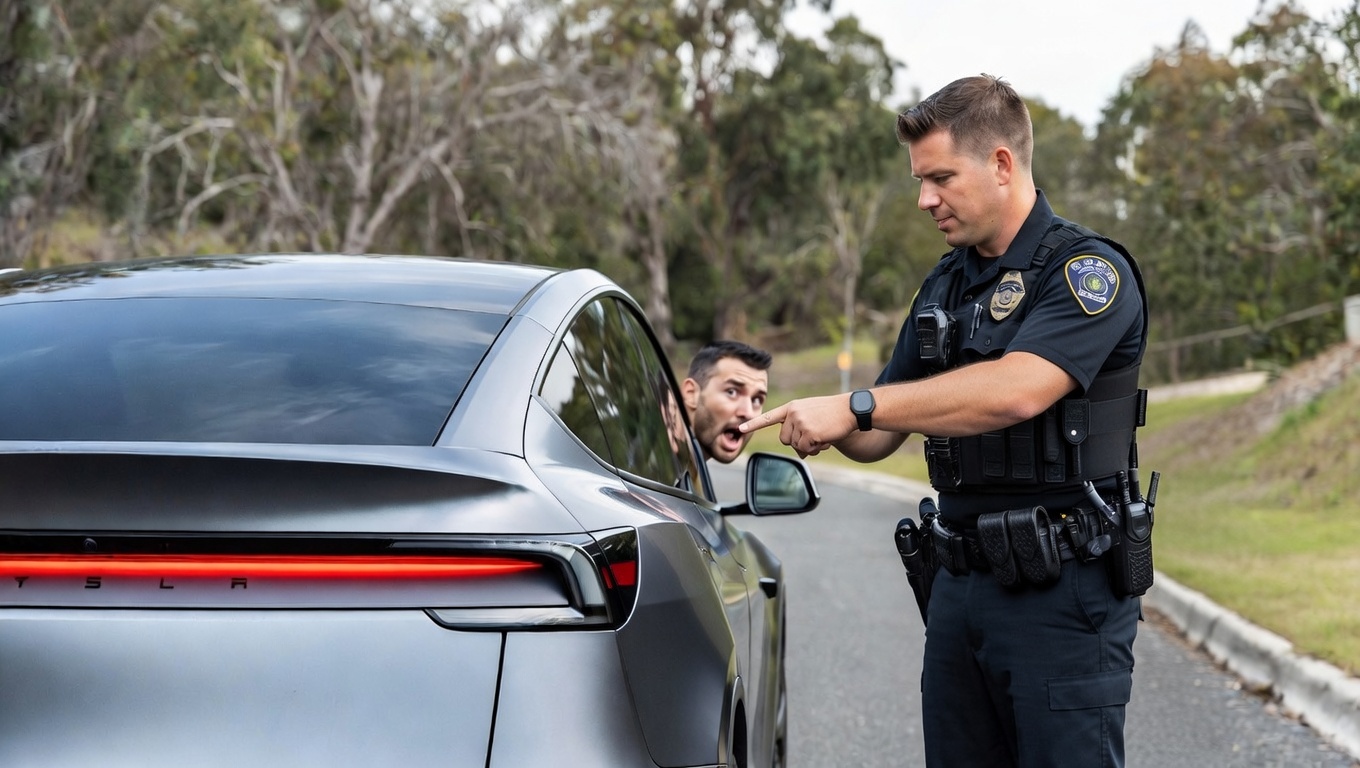
Tesla Model Y received a slew of both interior and exterior upgrades when the company refreshed its best-selling vehicle last year.
However, one of the more notable changes from an exterior perspective landed a driver in hot water with a local police officer, who was confused about the situation with the taillight bar and its ability to alert other drivers of a reduction in speed.
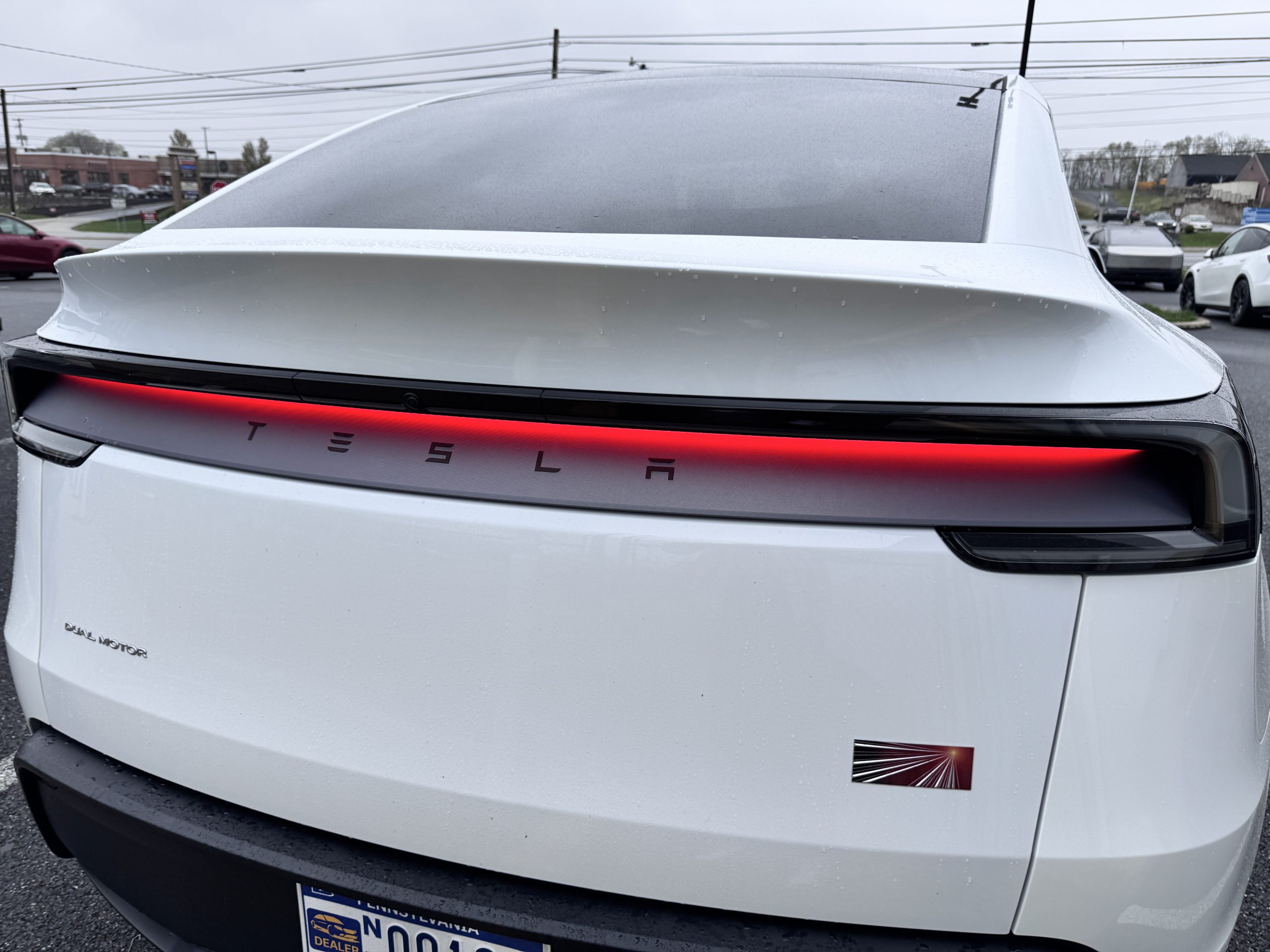
The new Tesla Model Y taillight with taillight glow
A Tesla Model Y owner in Indiana recently noted in a Facebook post that he was pulled over because a police officer thought the vehicle’s taillights were not turned on. However, the Model Y’s new rear light bar, which spans across the entire width of the vehicle, is more than visible in both light and dark conditions.
The incident, which was first spotted by Tesla Oracle, brings to light the interesting changes and perception of vehicle design that Tesla has brought forth with the new Model Y. We know some things might be head-scratching to some drivers, notably the Matrix Headlight technology present on the car, but this one truly baffled us.
The post stated:
“Just got pulled over for my tail lights not being “on” i told the officer it’s brand new. It has 1100 miles. I told him the red light bar is the taillight. The brake lights, both turn signals, and the red bar was on/worked. He told me that where the brake lights are, it should be illuminated there also. He gave me a warning and told me to get it fixed. Had anyone else had this kind of issue?”
Having the police officer tell a driver to “get it fixed” when it is a completely legal and functional design is pretty crazy.
However, the rear taillight bar, which glows and really gives the new Model Y a distinct difference between its previous iteration, is more than recognizable as a brake light and an indication of a reduction in speed.
Regulatory language for vehicle designs indicates that the light has to reach a certain number of lumens, or brightness. Lars Moravy indicated this on an episode of Jay Leno’s Garage when he and Tesla Chief Designer Franz von Holzhausen explained some of the details of the new Model Y.
This issue sparks some interesting dialogue people can have about vehicle design, and as more and more companies are adopting these futuristic looks, it seems law enforcement will have to get with the times and familiarize themselves with the regulations regarding exterior lights.








